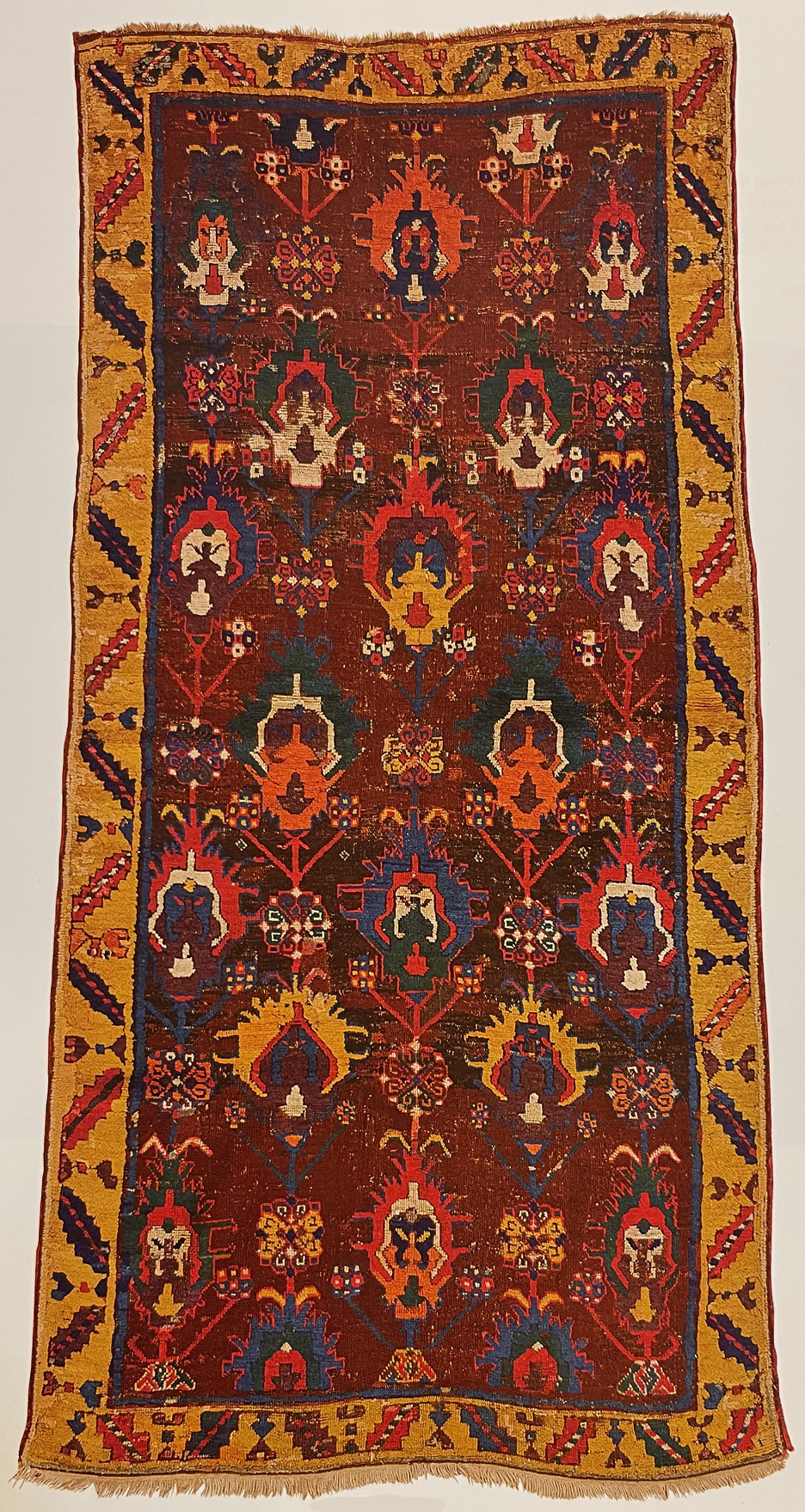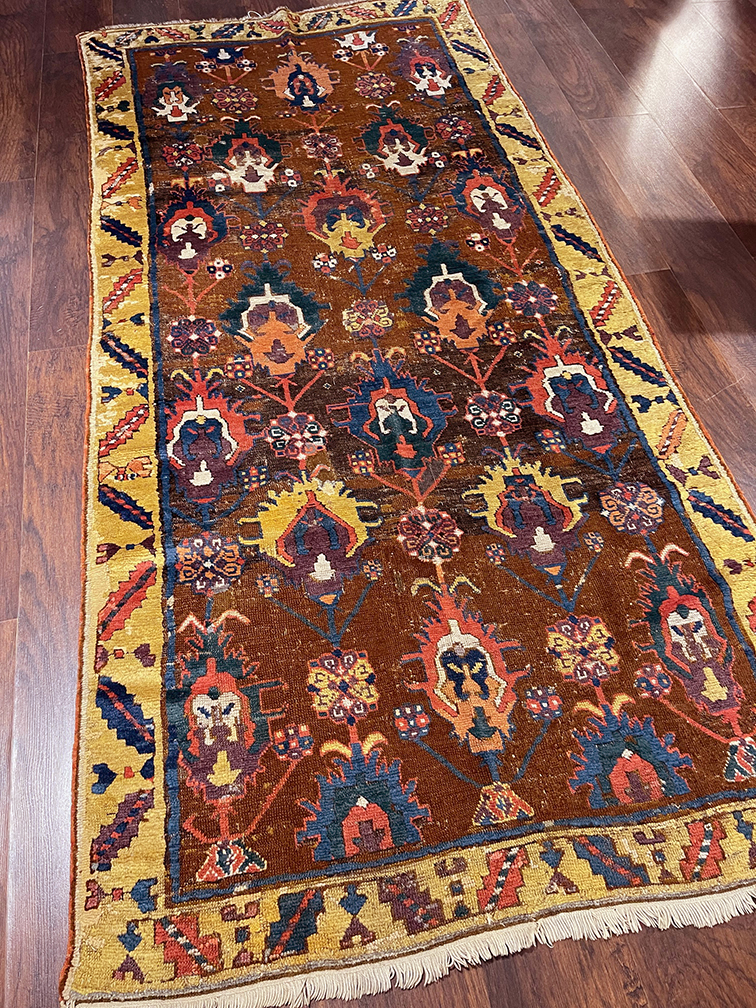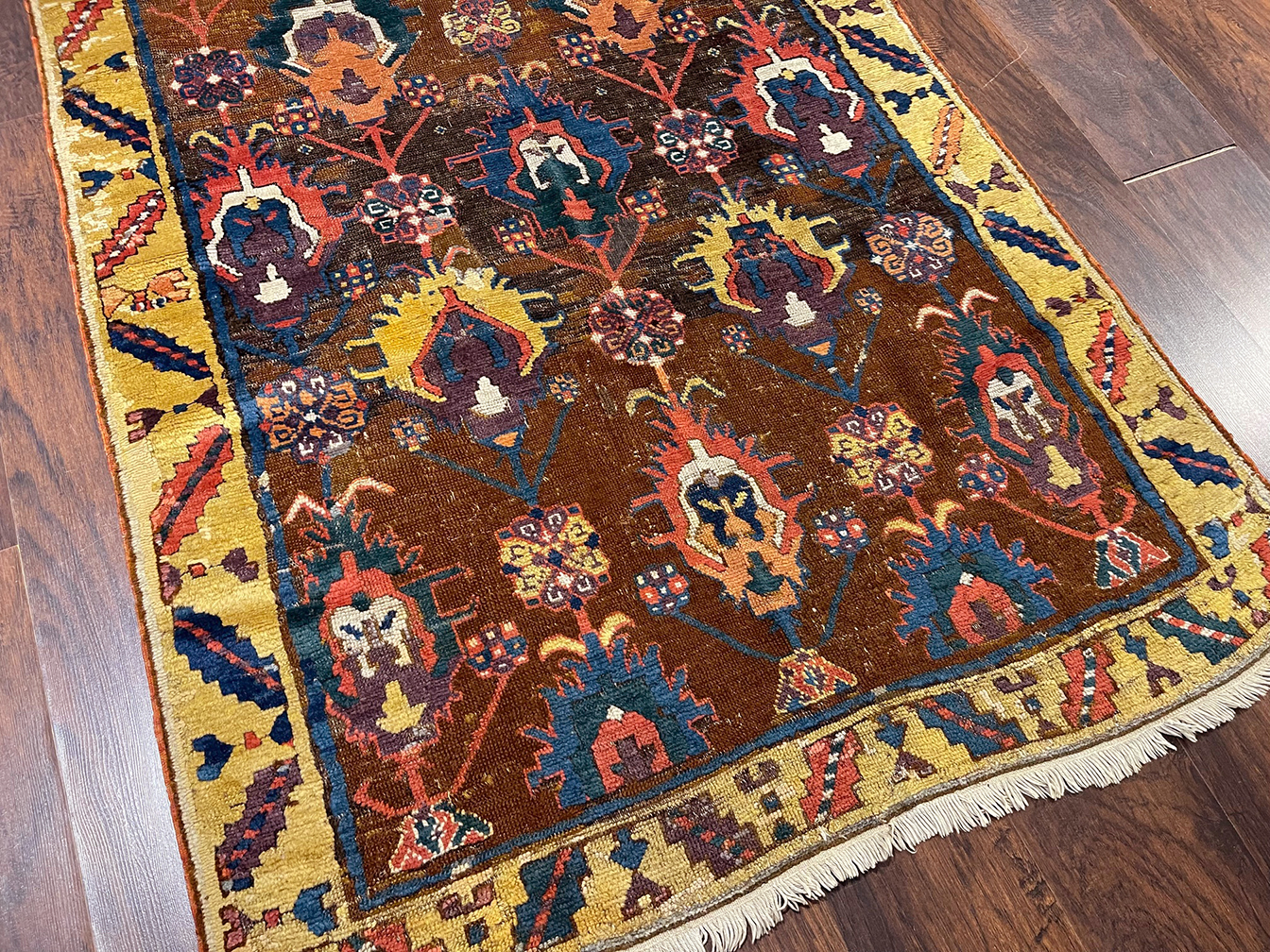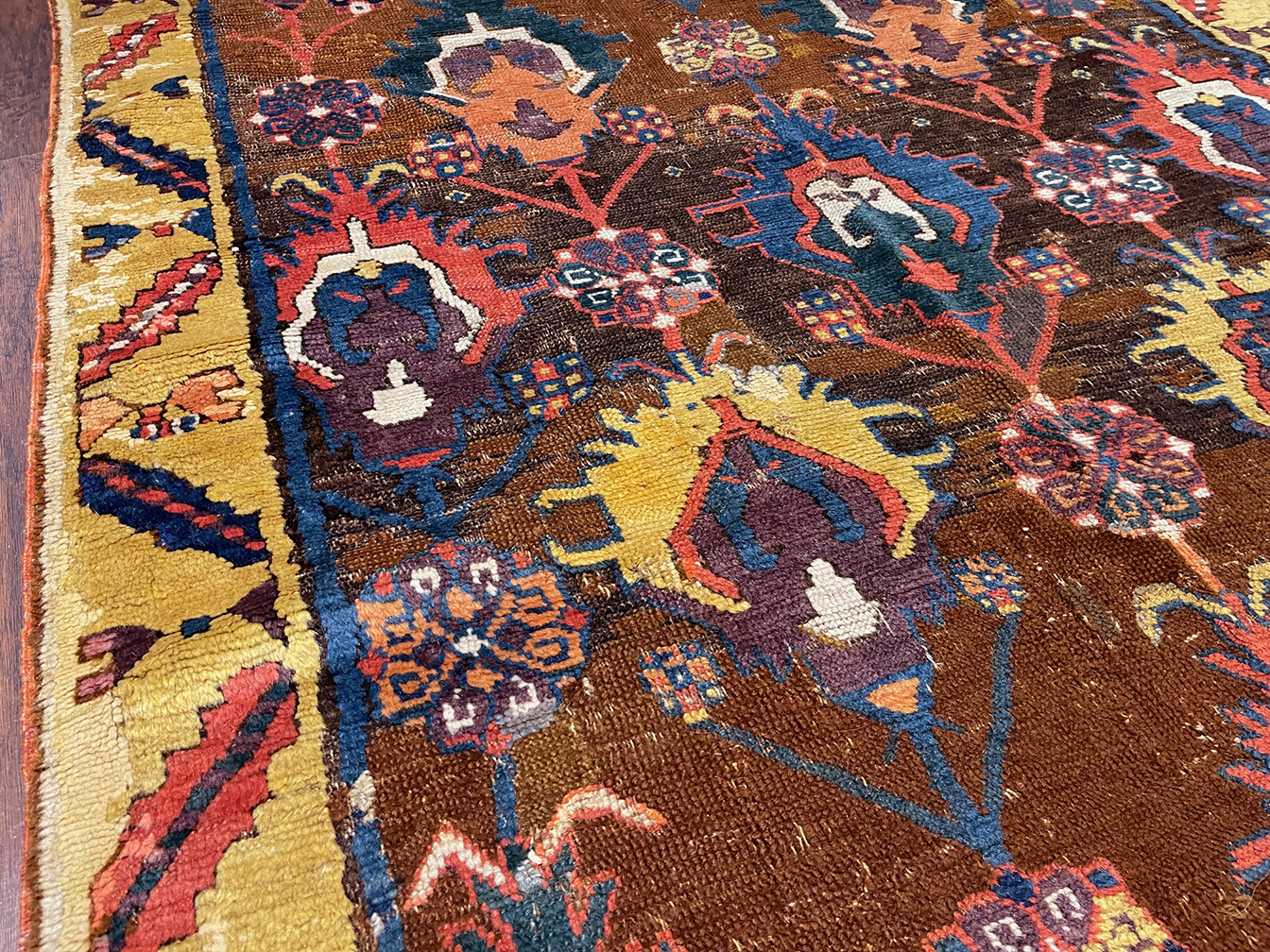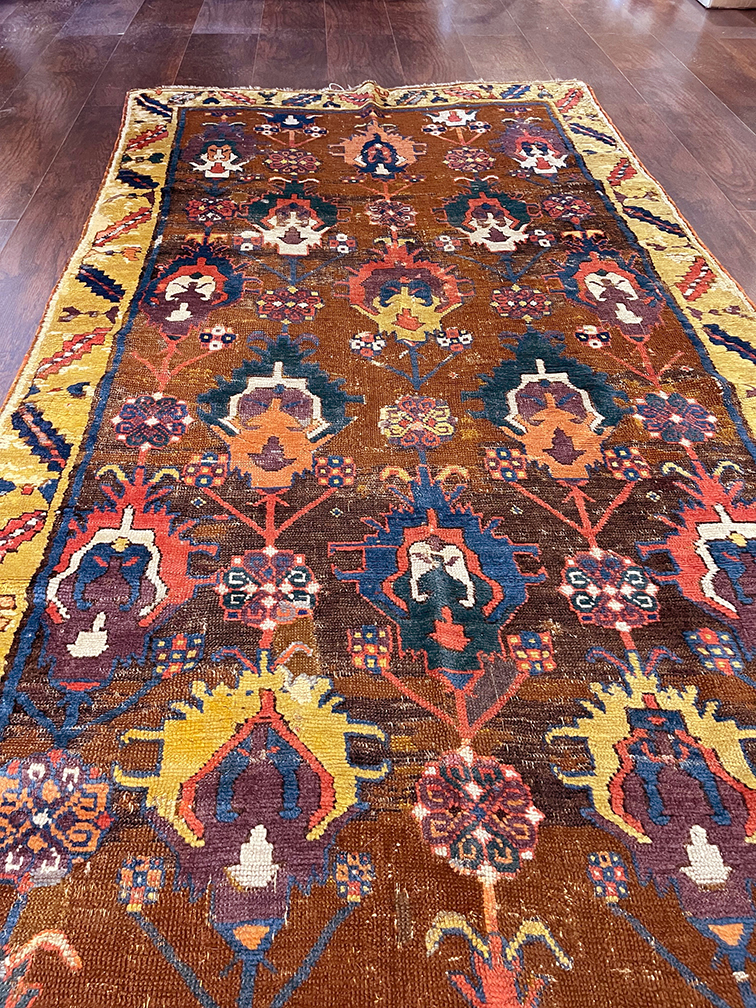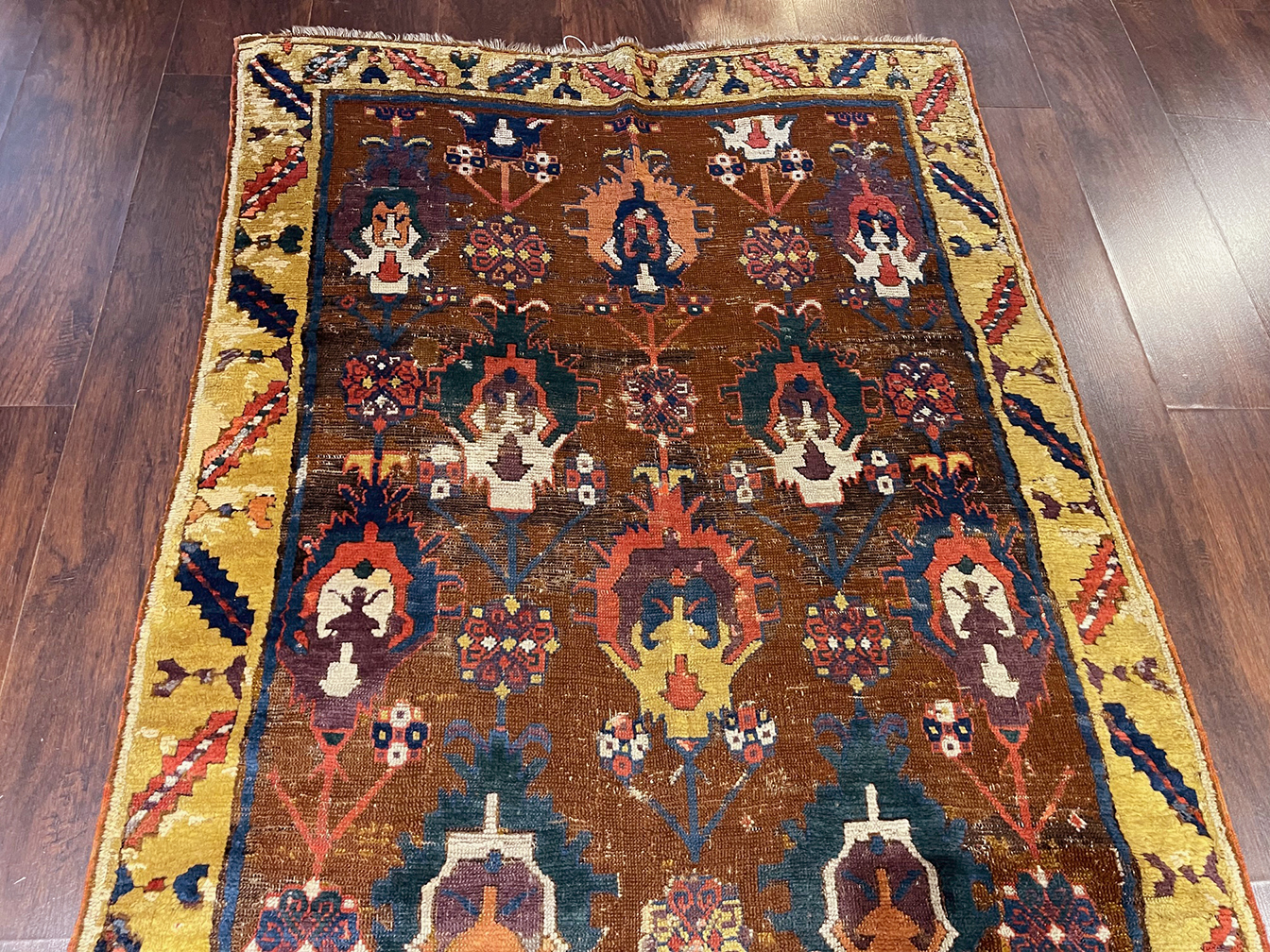Rug Detail
Antique Kurdish Rug 4'0'' X 8'4'', Item # 80146
Origin: West Persia
Circa: 18 Century
Size/Feet & Inches: 4'0'' x 8'4''
Size/Meters: 1.22 x 2.54
$$$$
Item Number: 80146
Provenance: Sotheby's New York, The Collection of William Price, Amarillo, Texas, 25 November 2008, Lot 99. Literature: - Fiske, Patricia L. Caucasian Rugs from Private Collections. Textile Museum: Washington, D.C., 1976, pl. 15. - Hali 159. "Auction Price Guide." Hali Publications Ltd: London, 2009, p. 120. Notes: [Auction Price Guide] Some of the best rugs defy precise classification, having tactile qualities that set them apart from any specific group. This early east Anatolian Kurdish rug is one such. Formerly in the Price Collection, it is decorated with an ascending pattern of offset vertical rows of blossom palmettes connected by poly-lobed rosettes of the type in the met hane borders of rugs from the Talish area. We see this design on a number of different eastern Anatolian/Kurdish weaves (Concaro & Levi, 1999, pl. 49; Bausback, 1978, pp. 80-81, Herrmann, SOT IV, no. 12); the latter motif may have persuaded the curators of the 1975 TM exhibition ‘Caucasian Rugs in Private Collections' to label it "Early Caucasian" when they published it in black & white. This rug's closest relative, especially in its treatment of the leaf and calyx border, is published (also in black & white) by C.G. Ellis in The Rugs from the Great Mosque in Divrigi ( Hali 1/3 1978, p. 272, fig.17), captioned "Rug with Shirvan pattern." The blanket-like texture of this rare masterpiece speaks of great age, while the autumnal palette is a signature of its Kurdish soul. The design pool from which many Kurdish rugs are drawn derives from classical workshops, here the early Caucasian group. What distinguishes them is true innovation with respect to tradition. This rug exemplifies that quality at its best." [Sotheby's New York] The lustrous wool, saturated color, and supple blanket-like handle of this rug are hallmarks of Kurdish weaving. The design of rows of multi-colored stylized palmettes alternating with rosettes is similar to that of an East Anatolian rug exhibited during the Milan ICOC and illustrated in Eduardo Concaro and Alberto Levi, Sovrani Tappeti, Milan, 1999, pl. 49, p. 70 and its very close cousin in Peter Bausback, Antike Orientteppiche, Braunschweig, 1978, pp. 80-81. The two sited rugs have a golden yellow ground while the deep brown field of the present rug serves as a stronger background that heightens the vivid coloring of the design. The shape and drawing of the palmettes in this rug are shared with an Azerbaijan rug in the Kirchheim collection which, in acknowledgement of their derivation from earlier Persian carpets, he calls "palmettes in the Esfahan manner," see Heinrich Kirchheim, et. al., Orient Stars, London and Stuttgart, 1993, pl. 75, p. 141. The deep brown field, yellow border and variety of color as well as the loose character of the drawing in the present rug are shared with an Azerbaijan rug illustrated in Georg Butterweck, et al, Antique Rugs from Austrian Collections, Vienna, 1986, pl. 18. There has been repiling to the brown in the ground of this rug where another Kurdish rug in the collection of James Burns, with "flaming" palmettes in colors similar to this carpet, remains on a now very corroded brown ground, see James D. Burns, Antique Rugs of Kurdistan, Seattle, 2002, pl. 74, pp. 156-7.
